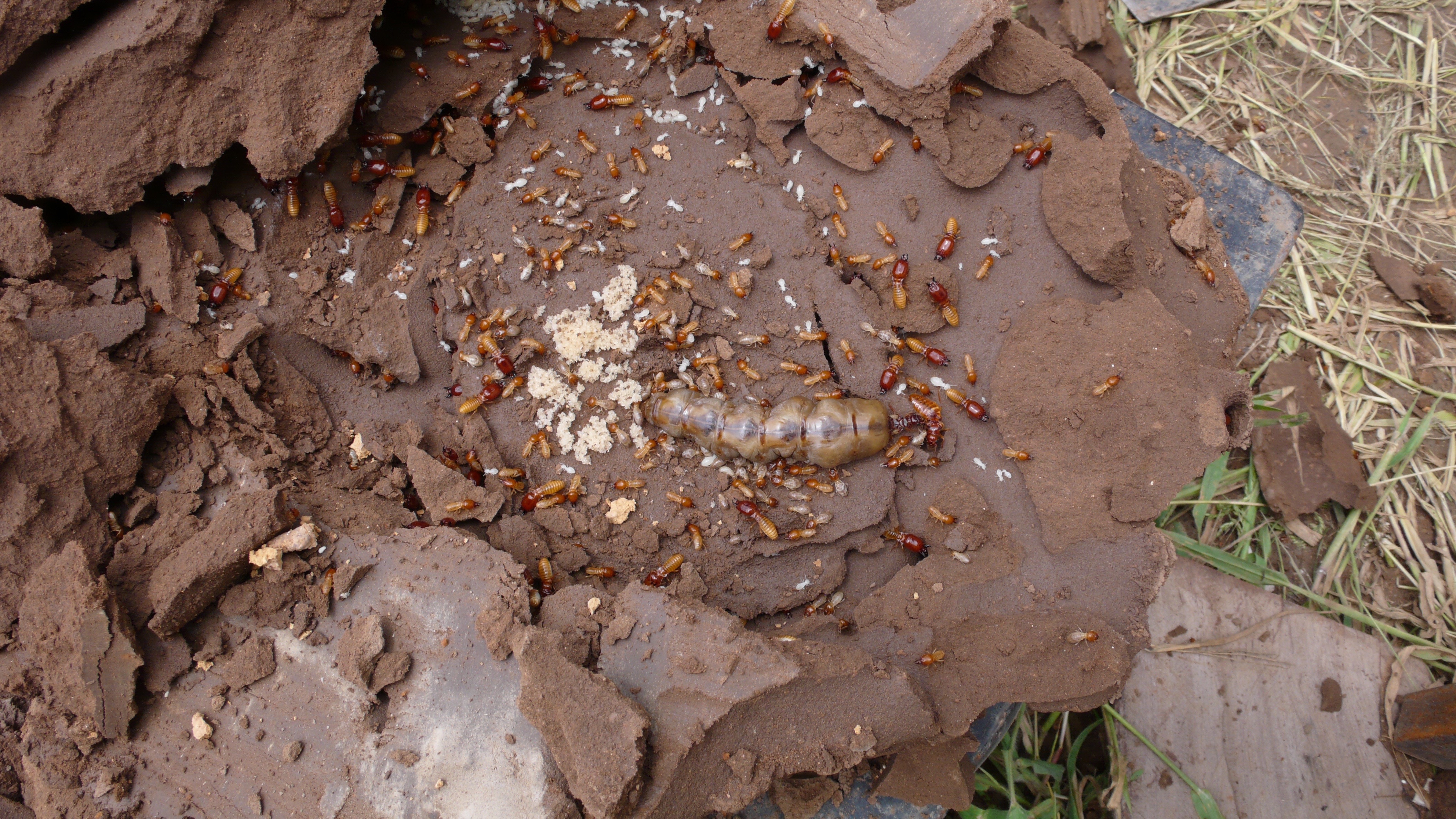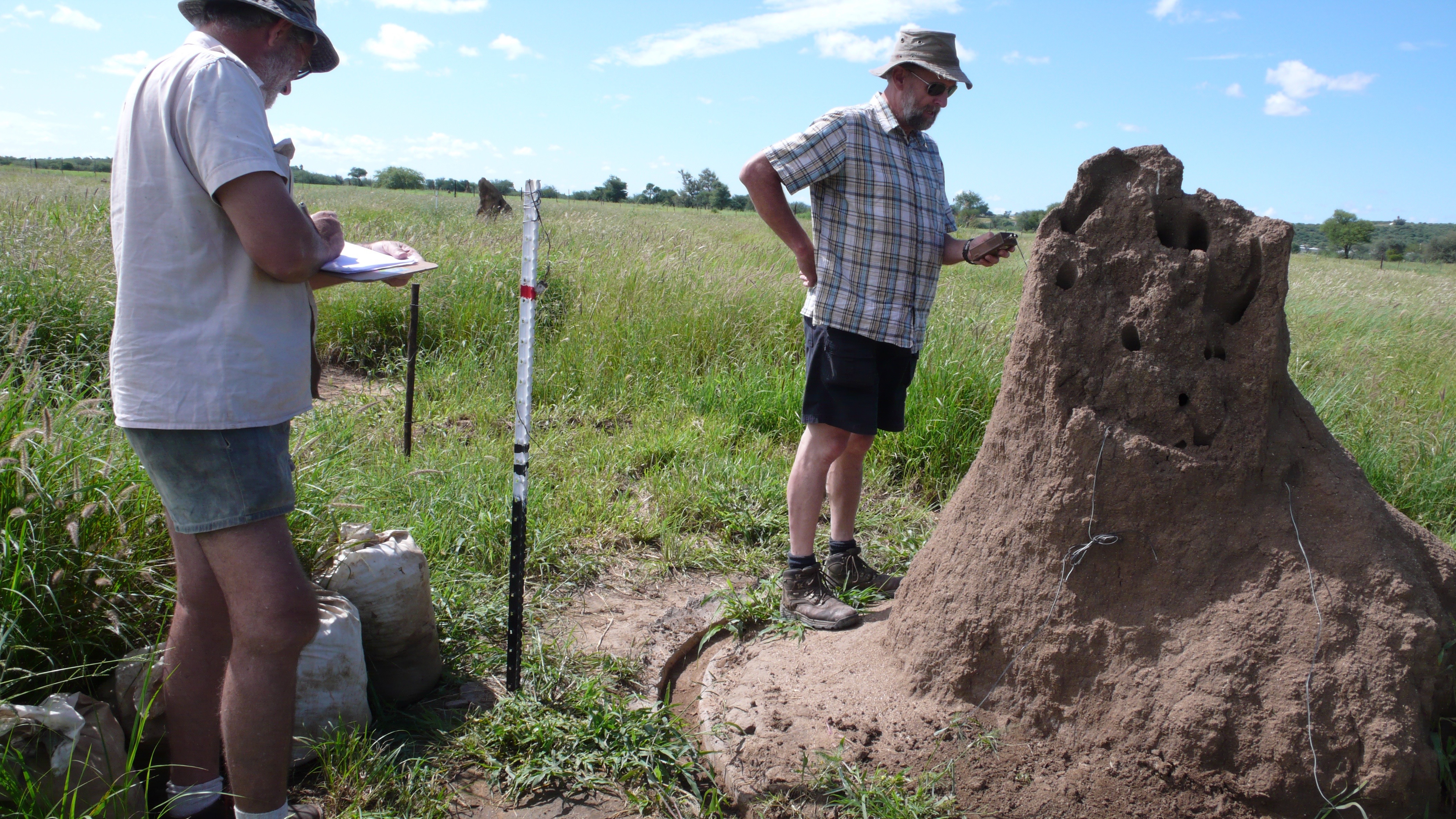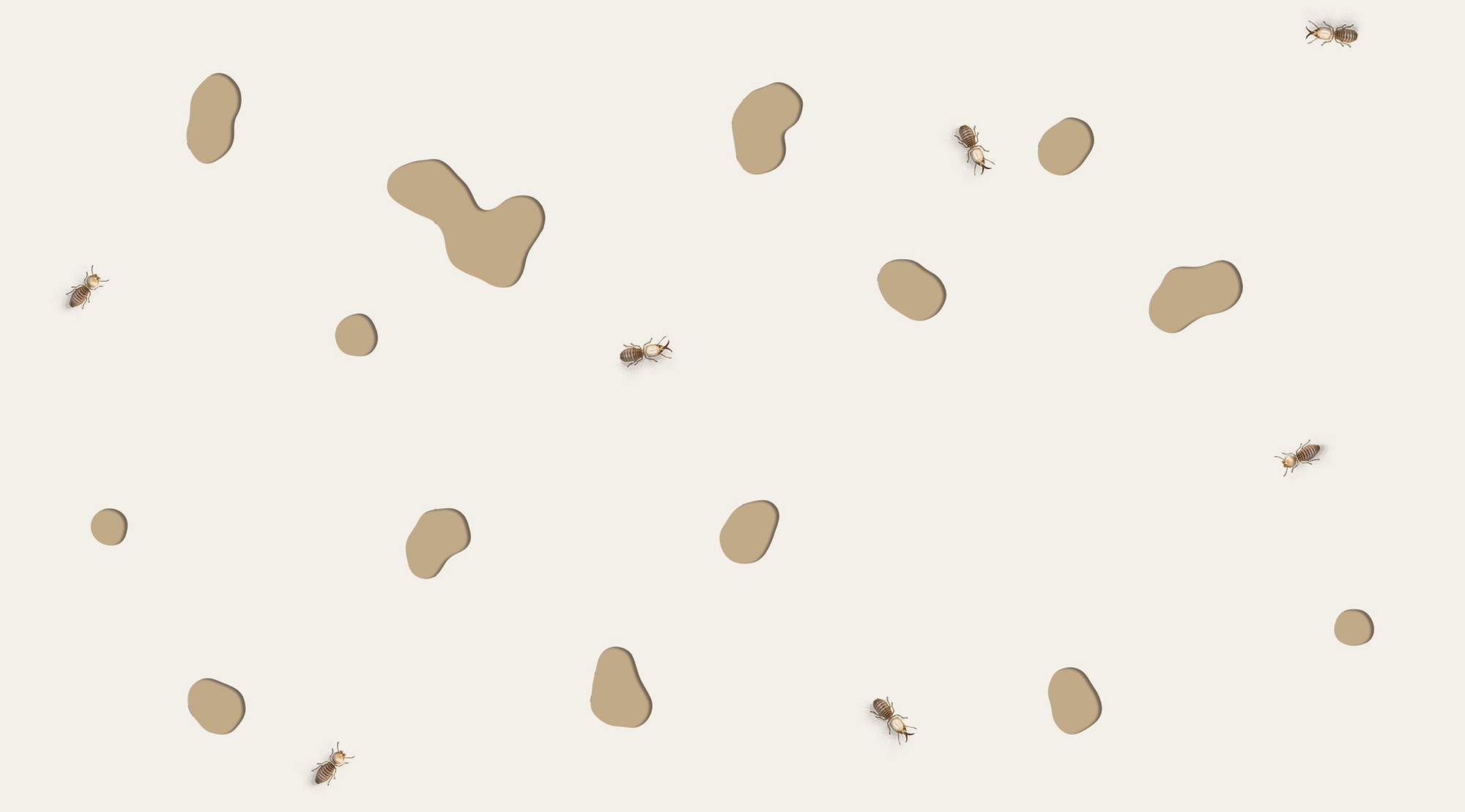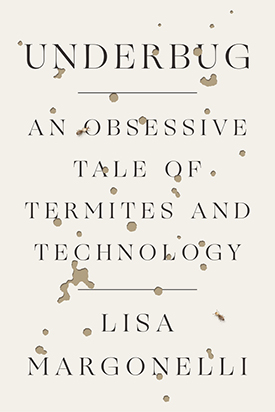The first time I remember seeing termites I didn’t even know what they were. A cluster of bugs with long translucent wings appeared on the side of a friend’s Northern California garage while we were drinking cocktails on the deck. They seemed to spurt out of a small hole in a shingle, as if someone were pouring them out of a pitcher on the other side of the garage wall. Their peculiar flow clued me in that they weren’t ants—which are leggier and tend to spread out in fervid asterisks—but what were they? In fact, I was watching what entomologists call the nuptial flight, when fertile male and female termites leave the nest to breed. Without knowing any of this, I felt anxious about the possibility of a bulging parallel world inside the garage wall. That excited something primitive in me. I borrowed a flip flop and smashed as many as I could. Whap!
But that was not the end of our adventure together. For the past decade, I watched scientists watch termites to research Underbug: An Obsessive Tale of Termites and Technology. During those years I had to learn how to look at termites, which meant learning to see them—their details and their behaviors—with the hope of understanding them.
On an early termite “safari” with microbial geneticists in Arizona in 2008, I couldn’t even find any of our quarry because North American termites hide themselves in logs, buildings, and underground. When I did find some—they were tiny and all tangled together—I had a hard time seeing anything more than their weirdly transparent exoskeletons and dark heads. I numbly wrote in my notes: “blackish.”

The queen and family in her broken chamber. (The king is the other large termite.) Namibia, Africa.
On my next termite trip, to Namibia in 2009, I followed physiologist Jeffery Scott Turner around as he explained the 12-foot-tall macrotermes mounds he works with. Over the years, Scott had inserted windows in mounds, given termites beads to carry, and done many other experiments to observe their behavior. With Scott’s guidance, I started to see their differences. The workers had bulbous round heads, which were different from the large maroon heads featuring powerful pincers of the soldiers. Eventually I could distinguish the big “major” workers from the littler “minor” workers and the white babies. My notes became so detailed that I had to index them later so that I could grasp the totality of what the termites were doing. Examples of “cute termite behavior” included circling, kissing, vibrating, tending the queen, and resembling Shar-Pei puppies.
And yet, just because I saw behavior and could name it didn’t mean I understood it. “Kissing,” for example, described two worker termites which appeared to join at the mouth—but what were they really doing? Were they transferring fluids, food, and microbes? Or were they moving water through a kind of alimentary bucket brigade? Was one termite killing the other? Kissing was our idea, not theirs, and it didn’t help explain what it was that drove these termites to construct their enormous mounds. Scott had theories, and I read books and absorbed other theories, and these theories began to influence how I saw the termites themselves.
Merely describing termites brings us under the sway of very old ideas and metaphors that were imposed on them long ago, when Enlightenment observers believed that insect societies demonstrated nature’s preferred social organization. In 1781, Englishman Henry Smeathman reported that the magnificent macrotermes mounds he saw in West Africa showed that the “nobility” was served by laborers and soldiers, “as nature has so ordered it.” We have long since given up on the rights of kings, but we still call the inhabitants of the mound soldiers, workers, and kings and queens.
Which brings us to that queen. When entomologist Eugene Marais opened up the queen cell inside one of the macrotermes mounds, I leaned in to get a good look at her and couldn’t parse what I was seeing: a bag about the size of a human finger. My notes read: “weird caramel goo under tissue-thin skin. Swirls and pulsates. I must be hard-wired for revulsion.” Eventually I became more analytical, making out her small head and legs, the eggs emerging regularly from her tail end, and the spot where her wings had broken off. But calling this viscerally confusing creature a “queen” seemed almost criminally fanciful.
Eugene said he thought of her as a captive ovary. But even that idea—that the queen performed the function of an organ within a bigger “body” constituted by the mound and its inhabitants—relied upon yet another metaphor: the superorganism. With termites, it’s metaphors all the way down: along with monarchies and bodies, they’ve been described as factories, groups of robots, and brains. But, as with the concept of the queen, all of these metaphors deprive the termites of some of their uncanny bugginess.
With termites, it’s metaphors all the way down: along with monarchies and bodies, they’ve been described as factories, groups of robots, and brains. But, as with the concept of the queen, all of these metaphors deprive the termites of some of their uncanny bugginess.
Eventually, I filled up eighteen notebooks with observations of termites and observations of scientists observing termites. This problem of “seeing” termites, I came to realize, was not mine alone, but one that cut across scientific disciplines as researchers tried to observe termites without projecting a narrative onto their behavior. Today, of course, many scientists use gene sequencers, high altitude sensing, mathematical modeling, and computer programs to observe termites. This, you might assume, would yield more objective information, but over the years I followed teams of roboticists, microbial geneticists, synthetic biologists, and mathematical ecologists, I realized that that wasn’t always the case.

Eugene Marais and Jeffery Scott Turner visit one of the mounds that is being measured daily to track how much dirt the termites move in a year. Namibia, Africa.
Even with high-tech observations, metaphors still had a curious influence. A group of Harvard roboticists led by Radhika Nagpal and Justin Werfel started out with the idea that they’d observe worker termites and then model their behavior with robots, but several years into the project a home-built tracking system revealed that worker termites were individuals—a quirky society of leaders, followers, and slackers. Suddenly, the team was looking at something different than what they had set out to find.
And, even with lots of data, there is still a need for the very human instinct of intuition. When Princeton mathematician Corina Tarnita and ecologist Rob Pringle stood in the back of a truck to look at a field of termite mounds in Kenya, Tarnita had a sense that multiple repeating patterns of vegetation were organized around the termite mounds. Using computer models and aerial photograph, Tarnita, Pringle, and their teams were able to demonstrate that in dry savannahs termite mounds influence the fertility of vast sections of land, leading to not only more trees and grass, but also geckos and even elephants. Only by combining the mind’s eye with those of the machines were the scientists able to see what had been hidden in plain sight.
When I look at my pile of eighteen notebooks now, it’s obvious that what I thought was a project about termites was really one about learning to observe not only the bugs, but also the process of observation. Setting out to see the termites, I did learn to observe the elements of their exoskeletons and patterns of behavior, but I also tuned in my own perceptions of them—whether that meant being grossed out or having a sixth sense about patterns in their behavior. But then I also had to learn a discipline of balancing speculation and skepticism about the meaning of what I thought I saw. There’s an old saw about how observation changes the behavior of the thing being observed; it also changes the observer.
Lisa Margonelli is the author of the national bestseller Oil on the Brain: Petroleum’s Long, Strange Trip to Your Tank and writes the Small Science column for Zócalo Public Square, where she is a senior editor. From 2006 to 2012, she was a fellow at the New America Foundation. She has written for The Atlantic, Wired, Scientific American, The New York Times, and other publications. She lives in Maine.

